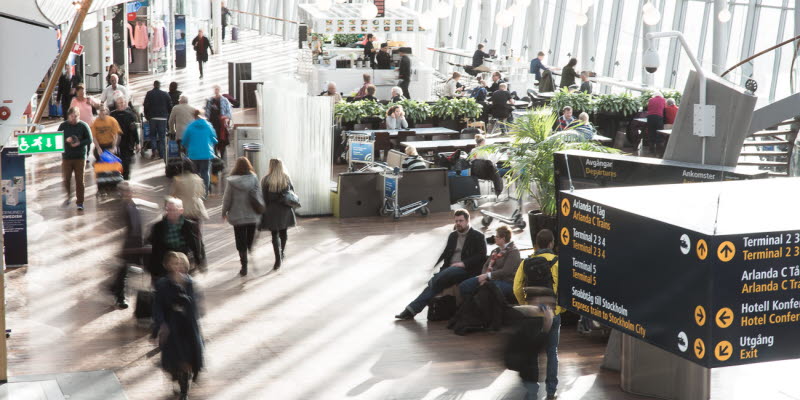Swedavia’s passenger statistics for March 2019
In March, nearly 3,261,000 passengers flew to or from Swedavia’s ten airports, a decrease of six per cent compared to the same month last year. A number of one off factors impacted the development, such as calendar effects and weather issues.

The number of international passengers decreased six per cent to nearly 2,118,000 in March, while the number of domestic passengers at Swedavia’s airports was more than 1,143,000 during the month, a six per cent decrease compared to the same month last year.
Traffic development was dented by several one off effects such as Easter travel taking place in April this year compared to March last year, having an impact on the number of international passengers. Air travel was also impacted by the weather situation with heavy snowing early March.
In March, more than 1,622,000 international passengers flew to or from Stockholm Arlanda Airport, a six per cent decrease compared to the same month last year. Domestic passengers decreased five per cent during the month to nearly 457,000 passengers.
At Göteborg Landvetter Airport, more than 383,000 passengers flew internationally in March, a six per cent decrease compared to the same month last year. There were more than 107,000 domestic passengers, which is a thirteen per cent decrease compared to the same month last year.
Regional differences between Swedavia’s airports were also seen during the month for both domestic and international air travel. At Kiruna Airport and Åre Östersund Airport, the total number of passengers increased, by eight and four per cent respectively, in March. At Bromma Stockholm Airport, the number of international passengers increased six per cent to nearly 30,000, while domestic travel decreased six per cent to nearly 175,000 passengers.
Swedavia has an ambitious sustainability work since many years. By 2020, all ten of Swedavia’s airports will produce zero fossil carbon dioxide emissions from their own operations.
Swedavia makes an active work to promote the shift to bio jet fuel, which is one of the most important measures to reduce the air transport industry’s climate impact. Early in the year, Swedavia took the initiative to launch a joint tender process for purchasing bio fuel, inviting other State-owned companies and organisations to take part.
Swedavia’s target is to have five per cent of all fuel used for fuelling at Sweden’s airports be fossil-free by 2025. Since 2016, Swedavia purchases bio fuel equivalent to the amount used in the company’s air travel for business purposes, about 450 tonnes of fuel annually.
Traffic statistics for Swedavia’s airports are available here (in Swedish).